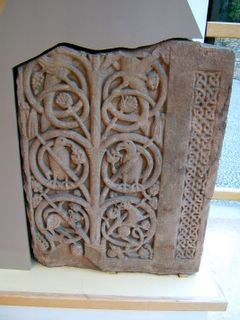
This shrine fragment is dated to the early eight century. It is quite important because it bears roman (birds and leaves) and celtic symbols. It is considered one of the early eaxmple or christian art in Scotland.
Per tempus, cum laetitia, amo. --Etna, 17th of November 1991

© Galilei 2005 - Powered for Blogger by Blogger Templates
|
|

|